Distinction between the cure and care markets
Dutch healthcare is usually considered to exist in two markets. The first is the ‘cure’ market, aimed at curing people in the short term. Financing comes from every person of 18 years and older in the Netherlands, through their healthcare insurance. The insurance companies pay for any medical treatments, with the exception of the obligatory own-risk deduction. The second is the care market, which is aimed at providing support for people who need help to take care of their own basic needs (elderly people and the mentally and physically disabled). A large part of the costs related to this assistance is considered ‘uninsurable’, which means the Dutch Government finances this type of care (Intramural care). The costs are covered by premiums people pay through their taxes.
Summary of the Dutch healthcare market
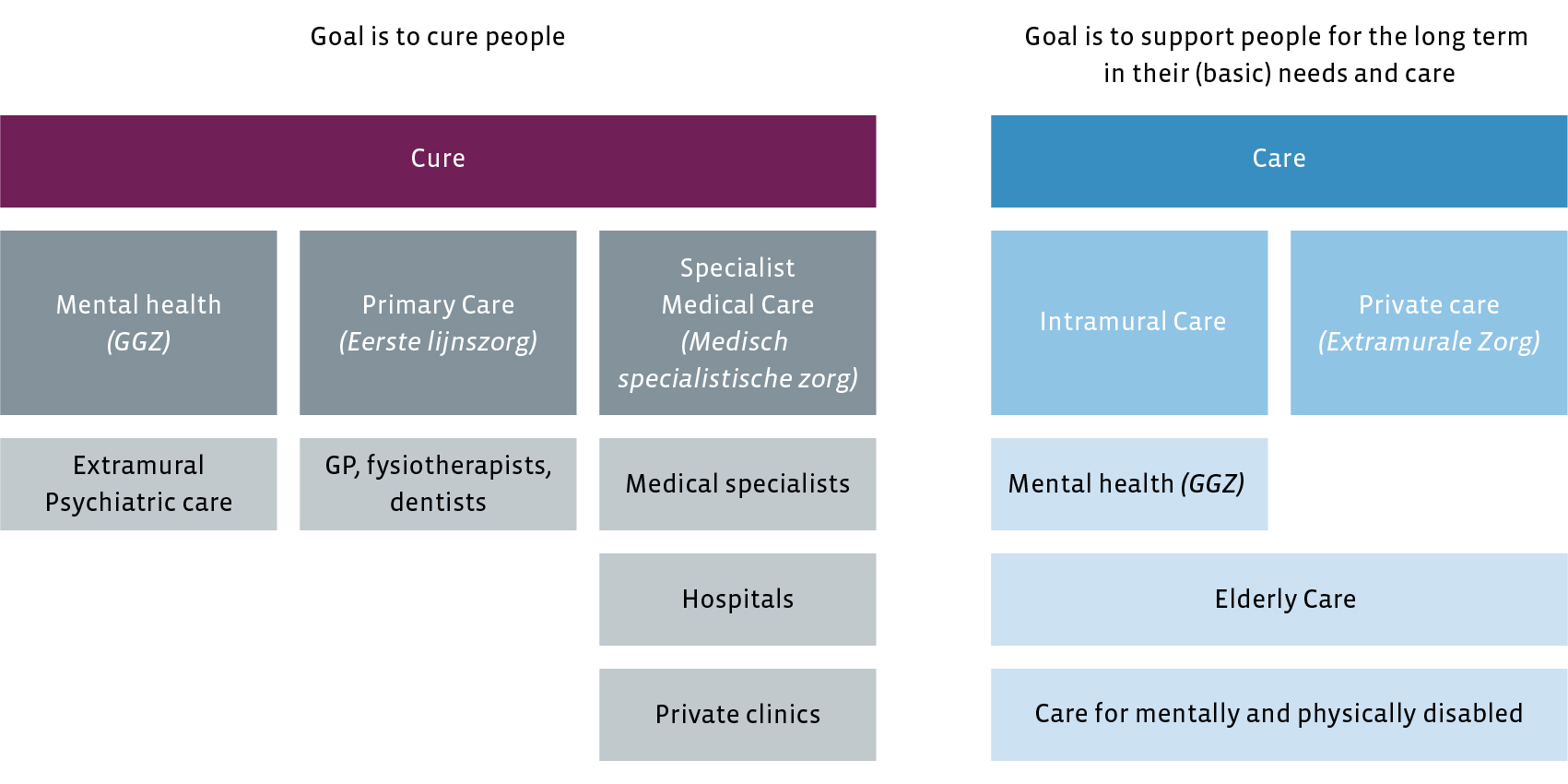
Fund strategy
Driven by strong market fundamentals, the Fund’s strategy is growth with a focus on a predictable dividend return and moderate value growth through investments in stable and growing segments in the Dutch healthcare real estate market.
In short, the Fund’s strategy is as follows:
Core investment profile
No leverage
Growth strategy (€ 500 million end of 2019)
Target long-term average annual Fund return 6.5%
Focus on distinct healthcare segments in the Netherlands
Regional diversification based on a positive economic and demographic outlook, with 80% within the core regions
Rent increase: inflation linked
Mix of master lease and individual lease
CSR integral part of the Fund strategy
Focus within healthcare market
Not all areas within the healthcare markets are equally attractive. In the figure below, we see that the primary focus for the Fund is on growing and stable target groups within the care market: the elderly care segment and the mentally and physically disabled segment. These segments are specified in more detail below.
Focus areas for the Fund
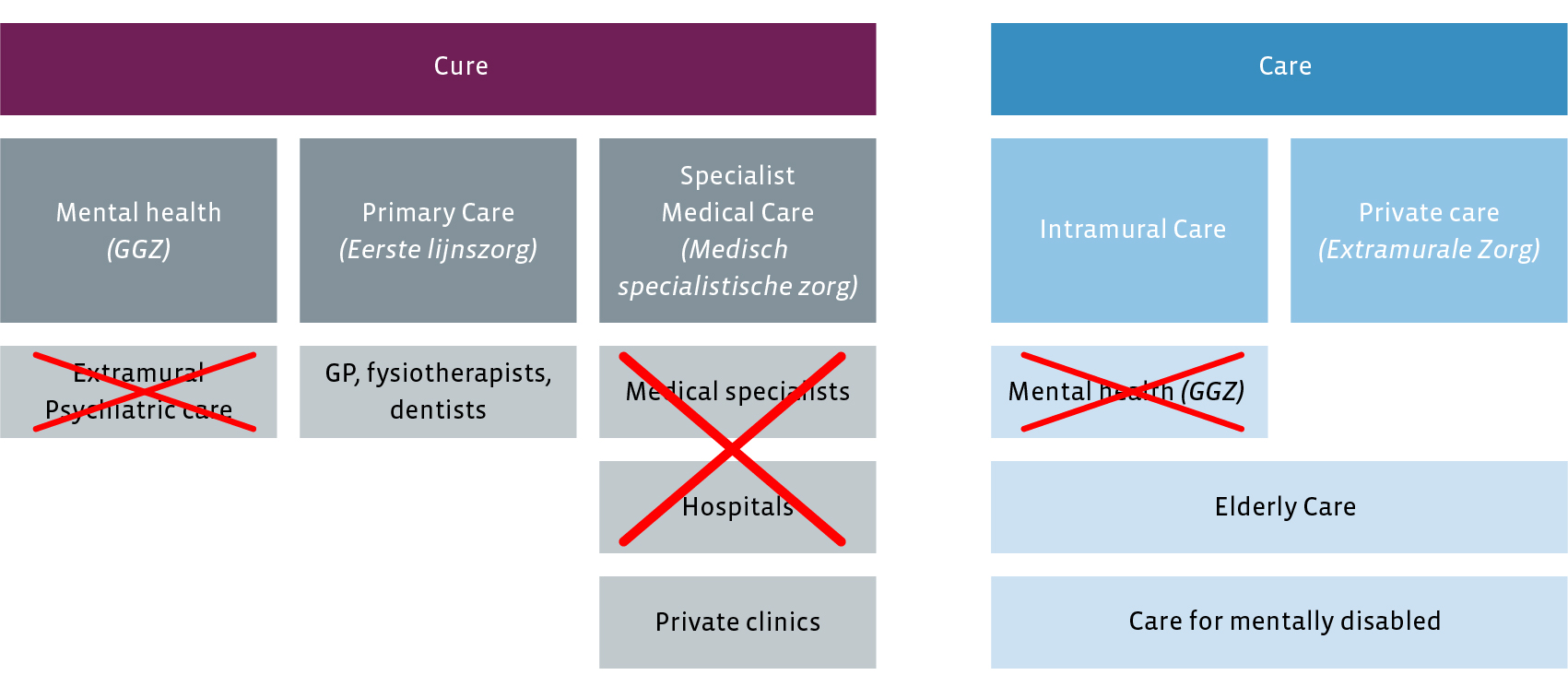
1. Assisted Living
Due to the separation of housing and care, there is a major increase in demand for high-quality care residences, a segment in which Bouwinvest already has a great deal of experience. Assisted Living includes two sub-segments. The first is the mid-segment for consumer incomes of between € 35,000 and around € 75,000. This pertains to the liberalised mid-segment rental sector, with lease prices of more than € 711 per month. Services and care are optional and propositions combine a modern, ‘care ready’ apartment with care facilities ‘within arm’s reach’. We identify two basic models in this sub-segment. First, the model based on a master lease. This pertains mostly to propositions in either intramural care, care for the disabled and premium assisted living. The second model is based on individual lease with consumers, with a prominent role for the healthcare operator in delivering care and other services. Both models are developing rapidly at the moment.
The second sub-segment within Assisted Living is the premium segment for people with earnings of € 75,000 and upwards, which offers an all-inclusive arrangement, which combines housing, living and care. Although the market for these types of propositions is relatively small and estimated at about 300,000 people, it is an interesting segment because of relatively higher yields. The Fund focus either on established, larger players in the market, although newer 'start ups' are also considered if they present a new and dependable concept, on high quality locations, for which we see excellent (alternative) in case of operator default.
2. Intramural care
This involves intensive care for elderly (retirement homes) or disabled people for whom it is no longer possible or safe to live in their own homes. People who obtain an indication by the Dutch Indication Authority (CIZ) are eligible for a place in a retirement home. This indication has different levels from 4 up until 10, and are called 'ZZP's'. This segment is growing strongly, making this an interesting segment for institutional investors.
In the figure below, we represent the focus segments for the care market in a visual manner.
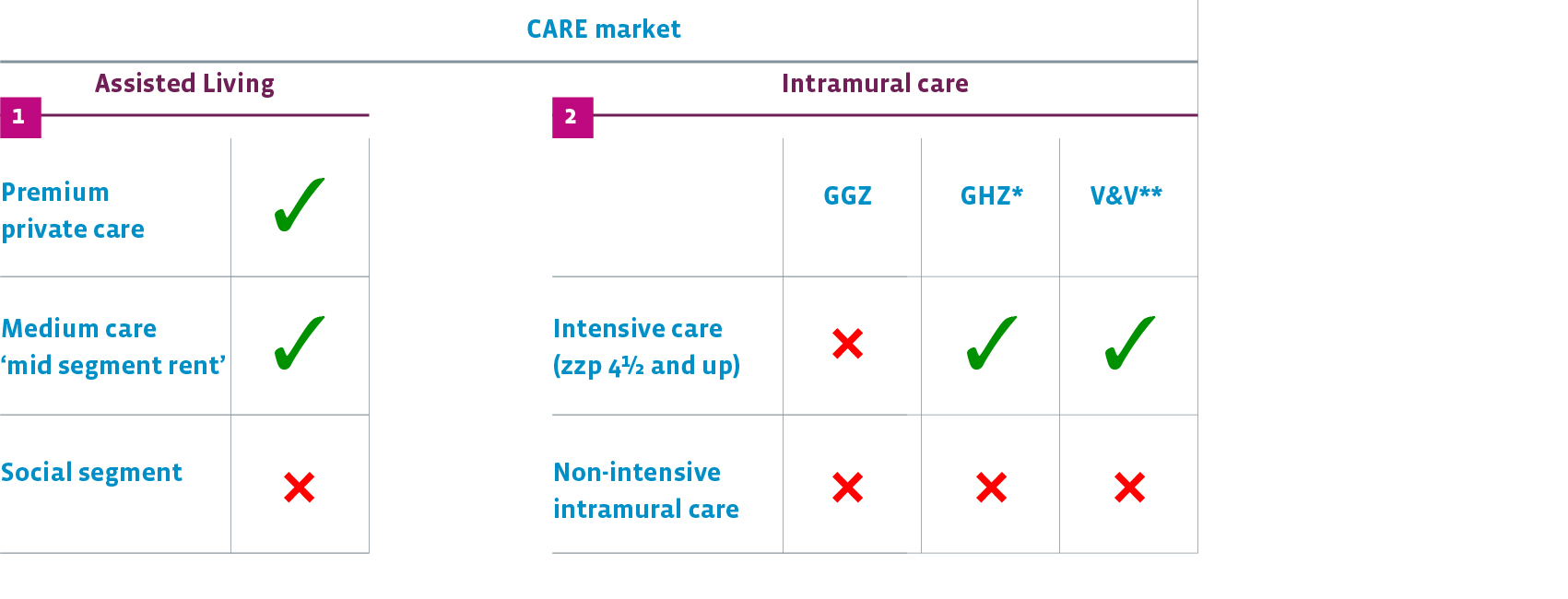
- *Care for the disabled (gehandicaptenzorg)
- **Elderly care (verpleging & verzorging)
Cure market
Within the cure market, we also focus on growing and stable segments. However, another criterion is that we only invest in the for profit segment:
Privately owned specialised clinics (that specialise in certain types of surgery, such as knees, eyes, skin, etc.)
Primary care: family doctors, physiotherapists, dentists, etc. (healthcare centres)
We exclude general hospitals, as these institutions currently have trouble maintaining in control of costs and revenues, due to changing government policy.
The reasons for excluding some sectors, like the GGZ, for the time being, is that the GGZ (both within the cure and care sector) is currently dealing with major overcapacity on the accommodation front, as a result of the budget cuts that have already been implemented and those yet to come. We also exclude specialist care (with the exception of independent treatment centres) for the time being, as this involves real estate that is so specialised that it cannot be used for any other purpose. This combined with the uncertainty surrounding hospital care (concentration of treatments, the set-up of several top centres, lack of clarity on reimbursements for treatments) means that this is not an attractive segment for core investments at the moment. However, we do not rule out that in the future the attractiveness may change.
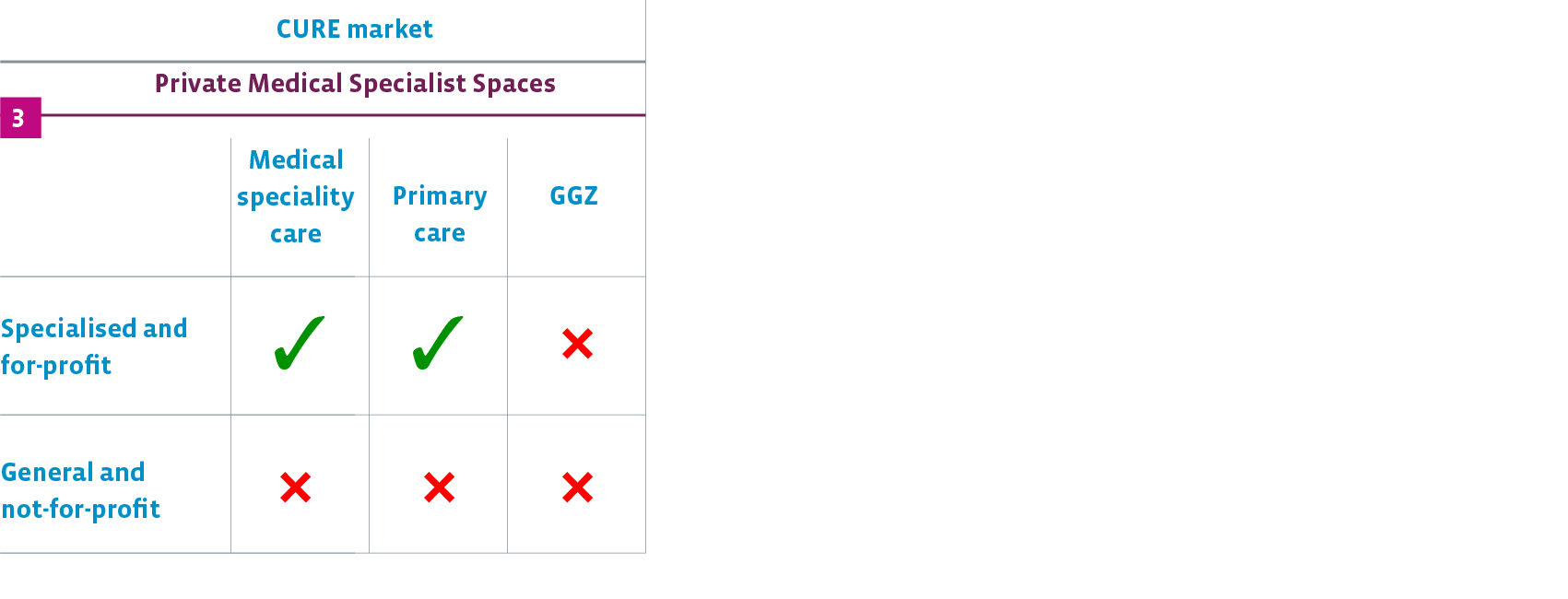
Focus on core regions
The regional focus is mainly on the ‘mid-west’ of the Netherlands, as can be seen in the figure below. The selected municipalities have strong foundations based on their demographic and economic outlooks and the real estate market, for both the elderly and the mentally disabled.
Core regions Healthcare Fund
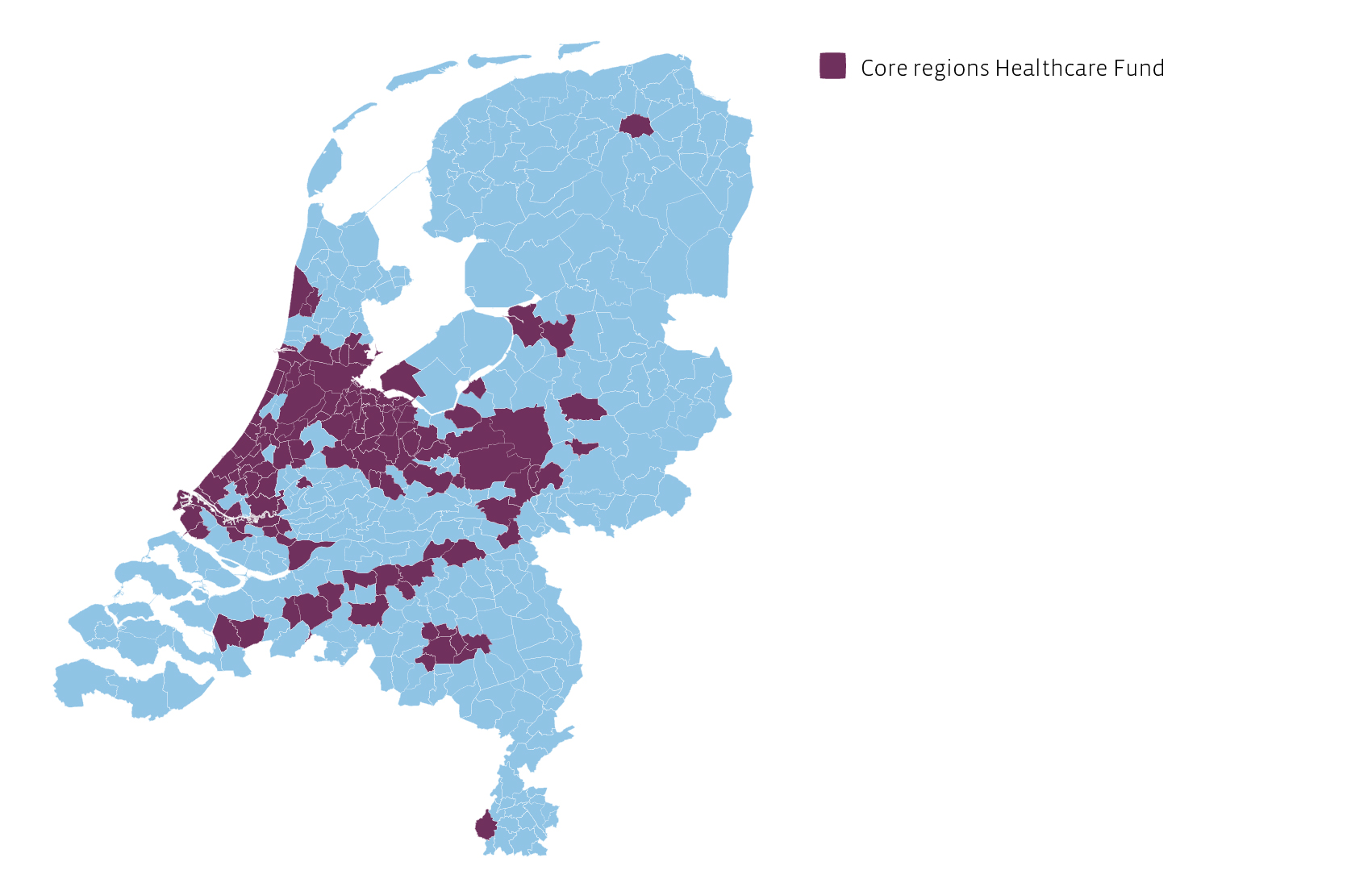
Diversification and investment guidelines
Target regional spread: At least 80% of NAV within core regions
No divestments
Mix of master lease contracts with care providers and individual contracts with consumers
For assisted living, investments are based on continued operation as opposed to individual sales
Extensive provider due diligence
The Fund directs much attention to assure the continuity of operations of the tenant. As a result of the changes in the funding of the care system in The Netherlands, the financial situation of many healthcare providers is not completely at the desired level yet. The fund performs extensive internal due diligence to assure that both current and future solvency and liquidity financials are sufficient to continue operations. Furthermore, the Fund only acquires intramural real estate that is attractive to other healthcare providers, so that new tenants can be found quickly in case of bankruptcy. And lastly, all assets are designed in such a way that they can easily be used for different healthcare concepts, and possibly be transformed into regular apartments.